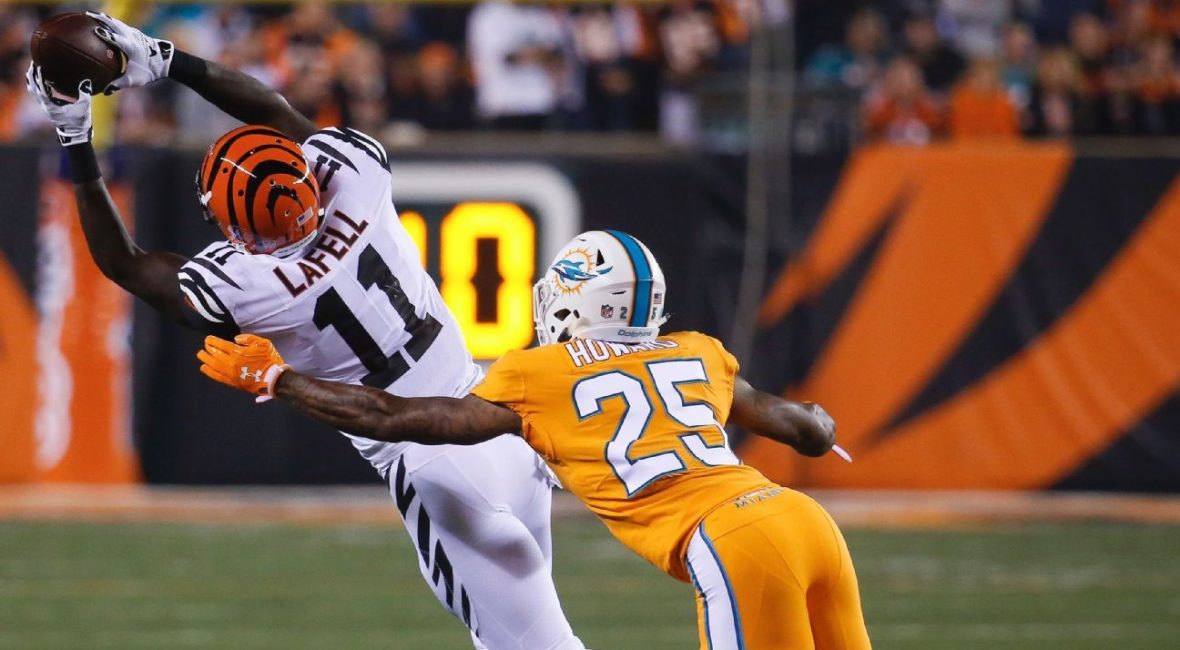It’s only a few weeks until the 2017 free agency period begins, and there’s a question that’s been asked often: Will the Cincinnati Bengals be active this year?
@Kat_Terrell what’s your sense of how the bengals view free agency this year?
— BigDay (@rsmith0906) February 9, 2017
For those looking for a big splash in 2017, prepare to be disappointed.
The Bengals have ample cap room, but they also have three big free agents of their own to re-sign (Andrew Whitworth, Kevin Zeitler and Dre Kirkpatrick). They’re also likely in line for one of their biggest draft classes in recent memory.
Compensatory picks haven’t been announced yet, but the Bengals could potentially get three or four picks in return for losing Marvin Jones, Mohamed Sanu, Andre Smith and Reggie Nelson in free agency last year.
The Bengals have already been preparing as if they’ll have a large draft class. Considering they’re a team that tends to keep all or most of it’s draft picks for at least the first season or two, they simply won’t have the room for a big free agent haul.
The Bengals prefer to draft and groom their players rather than go the free agency route.
Consider the 2016 roster: According to ESPN Stats and Information, as of Jan. 30, the Bengals had 43 drafted players on their roster and an additional 15 who had been signed as an undrafted free agent out of college (the most notable of those being Pro Bowl linebacker Vontaze Burfict).
Only nine players on the roster were signed as free agents, the most notable of those being linebacker Karlos Dansby and receiver Brandon LaFell.
LaFell was given an incentive-laden one-year deal with a cap hit of $2.4 million. He ended up hitting all of his incentives and finishing second among the Bengals receivers in receiving yards (862) and first in receiving touchdowns (6). LaFell played well enough that he will likely be a priority to re-sign in 2017.
Dansby also signed a similar one-year deal and figured heavily into the linebacker rotation.
Both were low-risk, high-ward options who contributed a significant amount of playing time.
So why are the Bengals so averse to free agency? They actually aren’t — they just prefer to stay out of the frenzy of the first-day signings and instead bolster their roster with more mid-tier free agents.
The Bengals feel free agency statistics don’t favor putting a significant investment into one player that hasn’t come up through their system. They feel that some players, particularly those who have come from struggling teams, have years of bad habits coached through other systems that are hard to break.
For a team like Cincinnati, which relies heavily on continuity with its coaching staff, that’s a big sticking point.
Bengals coach Marvin Lewis once made that point to ESPN in a 2016 interview.
“In the heat of the battle, they revert to what they know, and that’s the hard thing if they’re not trained through your system,’ he said. “When you play on bad teams you think you have to do something supernatural to make a play happen. No, just do your job. If you do your job and the other 10 guys do their job, you’re going to be OK.”
Don’t expect the Bengals to deviate from that philosophy this year. Though they might go after a mid-range free agent or two, it’s unlikely they’ll be making a big splash when free agency opens in March.









